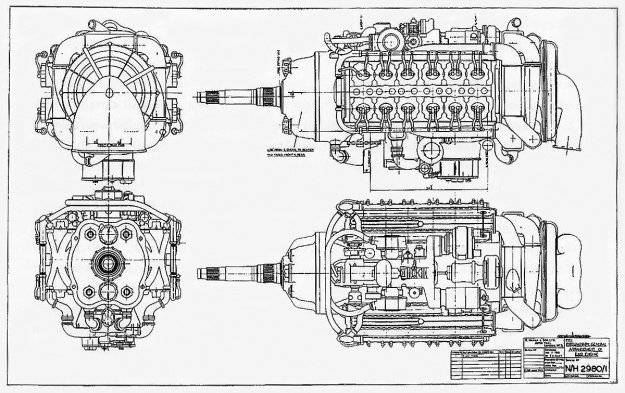- Joined
- 9 October 2009
- Messages
- 21,973
- Reaction score
- 13,631

Napier Sabre: Proudly presented.
Cantankerous sometimes, complex always, the Sabre delivered the goods, a lot of them. Magnificent rolling display.

See my book, THE SECRET HORSEPOWER RACE, page 310View: https://www.youtube.com/watch?v=Hk1-P5iksIc
Sorry if this is a rehash, but this video claims massive lobbying and implies underhanded politics on the part of Rolls-Royce for the slow development of the Sabre.. any opinions?
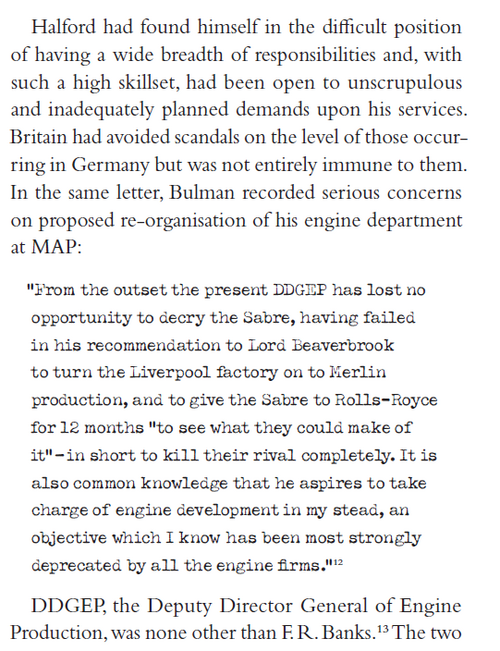
I’m not totally sure, but I do remember there might have been some issues with starting the engines by ether, can anyone confirm this (Colum?)
Both of this videos (Part 1 and 2) are a mess after half the lenght.View: https://www.youtube.com/watch?v=Hk1-P5iksIc
Sorry if this is a rehash, but this video claims massive lobbying and implies underhanded politics on the part of Rolls-Royce for the slow development of the Sabre.. any opinions?

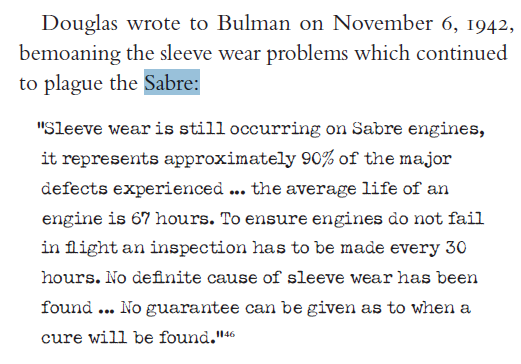
He even says in the second part video that 3500hp at 70.6'' was achieved WITHOUT ADI ''quoting'' this Graham White part.Videos like this and also Gregs, have spread more disinformation than the Abwehr. Unfortunatly "nearly right" is worse than totally wrong, because people get taken in by it and swallow a load of totally unresearched rubbish along with the facts.
"in 1941 the Sabre was a great platform but the induction system was not yet optimised"
What ?
Has this person ever read a SINGLE actual archive memo or file from the Air Ministry or Napier ?
Not a single one, yet proceeds to make videos about it.
It was about two years after that when it was running in any sort of mechanically reliable state.
Even Napiers internal files admit that
View attachment 678631
Air Ministry correspondance, by the end of 1942, the Sabre was averaging 67 hours life.
View attachment 678632
Mind you, I`ve only read all the original files of Napier and the Ministry, so what do I know
compared to YouTube. God spare me *facepalm and sobs with head on hands at desk*
You know, if anyone doing these videos just bloody emailed me and said "hey if I mention your book in
the video comment box,
can you just watch this through and tell me if I`ve missed anything"?
I would gladly do it.
But nooooo, thats too easy isnt it.
(in fact I`ve actually sent messages to one channel TELLING them what the errors were and actually offering archive files
to fix it. No interest)

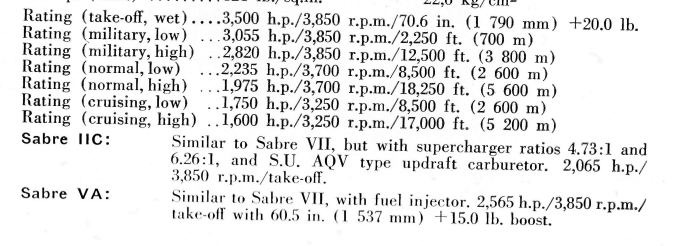
Was about to say that, it would be great if you could find the time to once in a while make some videosI should probably stop complaining and just make some videos which are actually correct, then everyone can choose as they see fit.
I dont have a video on the Sabre specifically, its a marvellous invention and incredibly interesting, its just not the right engine
if you have a time machine and its 1941.
People get all upset when you point out the mistakes, ITS NOT 1941 NOW. Its possible to both appreciate the great artistry AND understand why it wasnt the sucess it was hoped for at the time.
Not according to Calum's research - or received wisdom. It is well known that back around 1930 the Ministry had firmed up its policy of buying its main aircraft's engines from a single manufacturer, and had settled on Rolls-Royce. Calum's book documents how this policy was supported by targeted development funding of the Merlin throughout the war and was the prime reason why that engine came out smelling of roses.There was a war on, and Rolls were proving themselves the more capable at building high-performance aero engines that worked. S**t or get off the pot, Napier.
Given where the Merlin started, to reach 2100hp represented a doubling of its performance over its development life, not to mention a huge expansion in the available altitude range. How does the Sabre compare to that?The Series 7 eventually reached 2,760 hp rated takeoff power for the Hawker Fury. By comparison the Merlin never even made 2,100 hp.
That's like comparing apples with oranges. The Merlin's development life was several years longer and its funding during that period was at a higher level. It went from no supercharger to single-stage to two-stage, while the Sabre was supercharged from the word go. One can argue that in initially going for a monobloc, double-helical reduction gear and messing around with ramp cylinder heads, Rolls made a series of fundamental mistakes and the production Merlin II was effectively a new engine. On the other hand Halford just had to make the bloomin' sleeve valves work. And so on.Given where the Merlin started, to reach 2100hp represented a doubling of its performance over its development life, not to mention a huge expansion in the available altitude range. How does the Sabre compare to that?
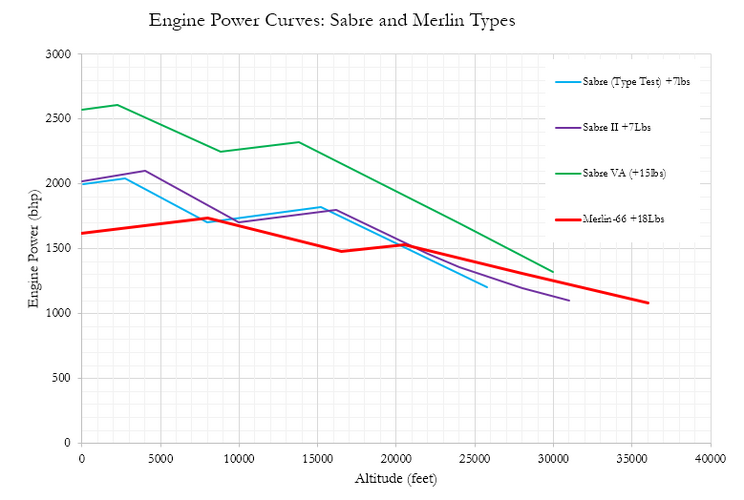
Calum,By 1944, its probably the power in the 25 to 35,000 feet range which really mattered.
It incredibly difficult to beat a Merlin-66 in that scenario until you get to a Sabre V, which
isnt really a WW2 engine, in terms of actual usage.
Important to also remember the difference in the size of cooling systems and frontal area. The "effective" power of the installations below is probably slightly less favourable than even this suggests, you cant put a Sabre in a Spitfire, and the
Sabre carries almost a thousand pounds of extra dry weight over a two-stage Merlin.
The data below is a little iffy other than the "POINTS", i.e take off, and the peaks. I dont think
the slope-off after the second gear is quite correct between them, but its enough for
a basic overall comparison. (I think the Sabre curves drop off a fraction too steeply)
View attachment 678702
